In many applications such as web servers, it is a common task to read disk file and write to the network interface directly without any modification. Zero copy frees the CPU from copying data from one memory area to another. This note is a brief on zero copy in Linux.
Traditional I/O
Traditionally, we use the read() and write() system calls to read data from disk,
then write it into a network device.
Recall that there is I/O buffering in Linux, so for each read() or write() call,
the CPU has to copy data from user space to kernel space, or backwards.
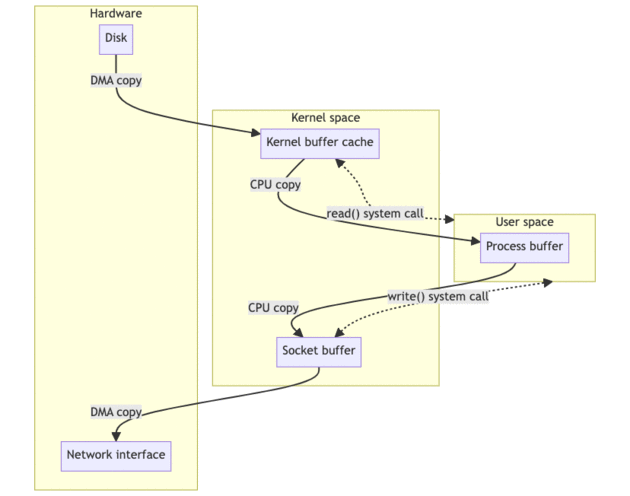
With DMA (Direct Memory Access), CPU can avoid copying from/to hardware buffers. But it still requires the CPU to spend valuable cycles to copy the data from kernel space to user space, and from user space to kernel space again.
Zero copy
In Linux, several zero copy technologies can help here to save the CPU cycles and memory bandwidth spend on data copying.
mmap() + write()
The mmap() system call is to create a memory map:
a section of the user buffer in the user space is mapped to the kernel buffer where the file is located.
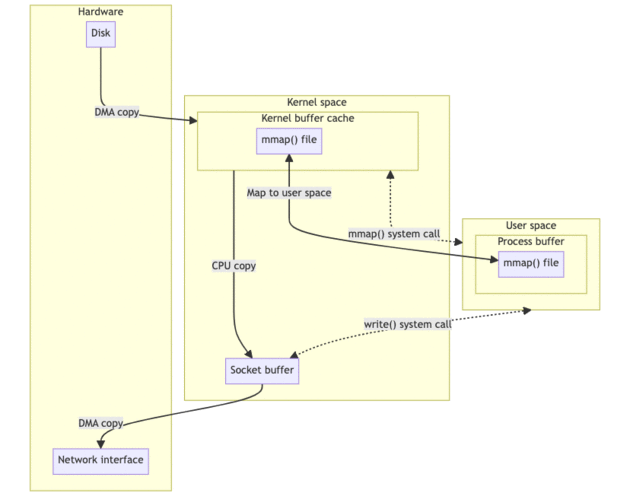
With mmap(), the data buffer in user space and kernel space physically point to the same address.
It saves memory space and it saves one copy from the kernel space to the user space.
One drawback of mmap() is that if another process truncate the mapped file,
the current process will get a SIGBUS single that can cause core dump error if it is not handled properly.
sendfile()
Since Linux kernel 2.1,
there is a new system call sendfile() which can been seen as a combination of mmap() and write().
It looks similar but saves one context switch.
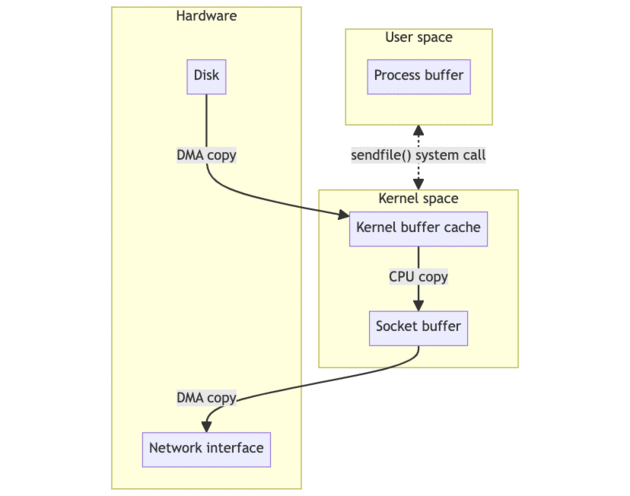
Note that there is a similar system API in Windows is called TransmitFile().
sendfile() with DMA gather copy
New DMA hardware supports the gather copy operation, with which you can specify a buffer descriptor containing the memory address and data size and let DMA copy data from there.
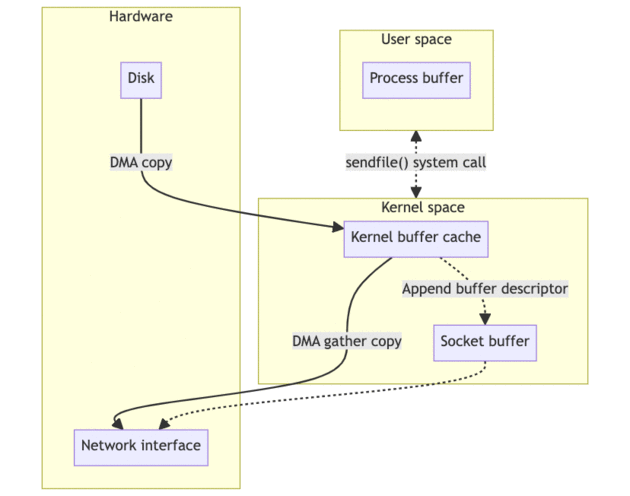
With the new hardware support, sendfile() can now have no CPU copy in the data transmission.
Note that the input file descriptor has to be a file with sendfile().
splice()
The splice() system call looks very similar with sendfile(),
but it can transfer data between two file descriptors of any type.
splice() also eliminates the last CPU copy in the DMA gather copy.
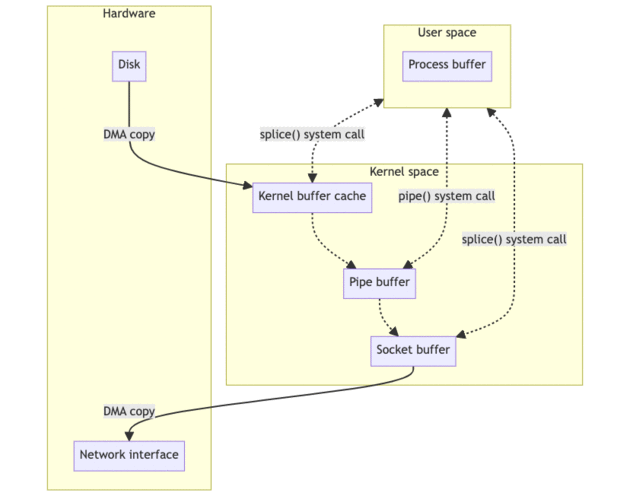
One of the two parameters of splice() must be a pipe device,
so typically, we need two splice() calls to bridge two devices (such as the below file_fd and socket_fd).
int pfd[2];
pipe(pfd);
ssize_t bytes = splice(file_fd, NULL, pfd[1], NULL, 4096, SPLICE_F_MOVE);
assert(bytes != -1);
bytes = splice(pfd[0], NULL, socket_fd, NULL, bytes, SPLICE_F_MOVE | SPLICE_F_MORE);
assert(bytes != -1);
splice() does not use the pipe API pipe_write()/pipe_read() to really copy data from one place to another in memory,
instead, it "copies" data by assigning the physical memory page pointers, offsets, thus it also requires no CPU copy.
send() with MSG_ZEROCOPY
This is a new zero copy implementation for sending data from user buffer to the network socket. Its usage looks like:
if (setsockopt(fd, SOL_SOCKET, SO_ZEROCOPY, &one, sizeof(one)))
error(1, errno, "setsockopt zerocopy");
ret = send(fd, buf, sizeof(buf), MSG_ZEROCOPY);
